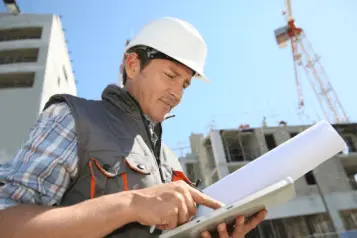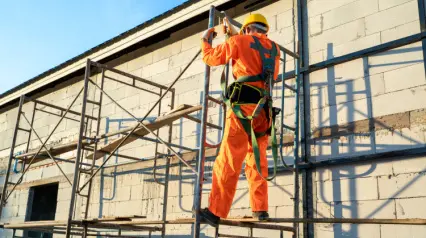What is a Site Inspection?
A site inspection is a series of regular check-ups and verification processes to ensure safety standards and working conditions are met at a work site. The traditional method of conducting site inspections involves field visits and paper checklists. However, some organizations are now using digital tools to streamline the process.
Site inspections often cover a wide range of topics, from building code compliance to fire safety. inspectors will typically spend time observing work areas and talking to employees to get a sense of conditions on the ground. The inspector will prepare a trip report detailing any issues found during the inspection. You can use this report to make corrective action plans and ensure that standards are met in the future.
Why is it Important?
Site inspection is crucial because it helps to ensure that work sites are safe and compliant with regulations. There are many benefits to conducting site inspections, including:
Quality Control
Site inspections ensure everyone involved in the project knows what is expected of them. It keeps the project on track and adheres to plans, specifications, timelines, and budgets.
Hazard Identification
Projects involving heavy equipment, powerful tools, hazardous chemicals, and other risks can seriously threaten workers if proper safety precautions are not in place. Identifying potential hazards before an accident occurs is possible through site inspections.
Compliance with Regulations
Various regulations, such as the Occupational Safety and Health Administration (OSHA) standards, apply to construction and other work sites. Site inspections help ensure that work sites comply with these regulations, which helps protect workers and avoid costly penalties.
Early Detection of Defects
Inspections can detect faults early on, allowing problems to be addressed before moving on to the next stage of development. In this manner, inspections assist teams in avoiding rework and associated expenses and delays.
Organized Inspection Data
Transparent and thorough inspection records document compliance and show how any detected flaws have been corrected. It provides a reliable reference in the event of future disputes or questions.
Continuous Improvement
A site inspection can identify areas for improvement at work sites. By tracking inspection data over time, companies can identify patterns and trends that can improve safety, compliance, and efficiency.
When Does it Occur?
Pre-Construction
A pre-construction inspection is when someone comes to your property before construction starts. Inspectors will look at the area around the site and see if everything is okay. They will also check to see if you are following all the rules from the local authorities.
During The Project
Construction site inspections are when someone looks at the construction project to see if it is going well. They look at if it is what was planned and how much it costs.
Project Close Out
The final inspection and construction close-out process are when you ensure that everything has been completed according to the contract. Following confirmation that everything is in order, you can use the building as intended.
Types of Site Inspection Processes
Organizations can use a variety of site inspection processes based on their needs. Some typical site inspections process include.
Daily Site Inspections
Daily site inspections document progress, quality, and safety concerns. By identifying potential problems early on, these internal periodic inspections can prevent more significant issues from developing.
Quality Control Inspections
Regular site inspections help ensure that materials and workmanship meet all relevant regulations and the specifications and quality standards in the contract documents. They also monitor progress to keep everything on scope, budget, and timeline.
Health and Safety Inspections
Work sites can be hazardous places, and it’s vital to follow safety protocols to protect workers. Identifying potential hazards before an accident occurs is the goal of health and safety inspections.
Environmental Inspections
Environmental inspections assess the work site for compliance with environmental regulations. These inspections help protect workers and the environment by ensuring that hazardous materials are properly handled and disposed of.
Inspections can include everything from looking at the impact of construction on wildlife habitats to examining preventative measures taken to avoid spills, erosion, or stormwater pollution.
Draw Inspections
A draw inspection is an examination that happens when someone requests funds from the financial backer of a project. A draw inspector who doesn’t have any stake in the project checks to see if everything is going as planned before releasing more funds. Examining the progress of the project and its costs compared to what was initially scheduled and budgeted is part of this process.
Application of Site Inspection for Different Industries
Many industries can benefit from site inspections, some of which include the following:
Construction
Construction projects are often complex, with many different trades working on-site at the same time. Keeping track of everything going on can be difficult, which is why regular site inspections are essential. By conducting inspections at different project stages, construction managers can ensure that work is proceeding as planned and that any potential problems are addressed before they cause delays.
Healthcare
The healthcare industry is regulated by several different agencies, which means that there are a lot of standards that need to be met. Regular site inspections can help healthcare organizations comply with all relevant regulations. Additionally, these inspections can identify areas for improvement in the quality of care.
Manufacturing
In the manufacturing industry, it’s crucial to ensure that products are produced according to specifications. Site inspections can help identify any manufacturing process issues to be corrected. These inspections can also verify that products meet all relevant safety and quality standards.
Food Service
Strict health and safety guidelines regulate the food service industry. Regular site inspections can help ensure that restaurants are meeting all relevant regulations. These inspections can also identify and mitigate potential hazards before an accident occurs.
How to Ensure Successful Site Inspections
For site inspections to succeed, you can take these steps:
Have Preparatory Meetings
It’s essential to have a preparatory meeting with all relevant parties before conducting an inspection. The discussion should include:
- A review of the contract documents
- An explanation of the inspection’s objectives
- A review of the procedures
It’ll help to ensure that everyone is on the same page and that the examination goes smoothly.
Discuss Job-Ready Issues
During the preparatory meeting, discussing any job-ready issues that need to be addressed is essential. These items need to be corrected before the project can move forward. Identifying these issues in advance can be addressed before the inspection takes place.
Discuss Job Completion Requirements
In addition to job-ready issues, it’s vital to discuss job-completion requirements. These items need to be completed before the project is considered finished. By identifying these requirements in advance, you can ensure they are addressed during the inspection.
Establish a Clear Chain of Communication
Establishing a transparent communication chain between the site inspector and the project manager is essential. The project manager should coordinate all activities related to the inspection and ensure that the inspector has everything they need. The inspector should communicate the inspection results to the project manager.
Create Project-Specific Checklists
Creating project-specific checklists is essential to ensure that all relevant items are addressed during the inspection. These checklists should be based on the contract documents and the inspection objectives. They should be reviewed and updated regularly as the project progresses.
Create your own Site Inspection Report Template
Build from scratch or choose from our collection of free, ready-to-download, and customizable templates.
Site Inspection Report TemplatesKeep it Updated
Make sure to keep your project-specific checklist up-to-date. As the project progresses, new items may need to be added to the checklist. Additionally, some items may no longer be relevant. By keeping the checklist up-to-date, you can ensure your inspection addresses all pertinent items.
Perform Critical Milestone Inspections
In addition to regular site inspections, it’s also vital to perform critical milestone inspections. These are inspections that are conducted at key points in the project. They can help to ensure that the project is on track and that all relevant requirements are being met.
Use Site Inspection Software
A variety of site inspection software is available to assist with site inspections. These programs can help to streamline the inspection process and make it more efficient. They can also help to ensure that all relevant data is collected and stored in a central location.
Achieve operational excellence
Cultivate a culture of excellence with our digital solutions that enhance efficiency, agility, and continuous improvement across all operations.
Explore nowHow Do You Prepare Inspection Reports?
Once the inspection is complete, it’s crucial to prepare a site inspection report. This report should include a summary of the findings and any recommendations for corrective action. The project manager and the client should review the report. Reports should be filed with project documentation once approved.
When preparing an inspection report, there are a few key things to remember:
Don’t Hurry
It’s essential to take your time when preparing an inspection report. Rushing through the process can lead to mistakes being made.
Know About What You’re Writing
Before you start writing the report, it’s essential to understand the project and the inspection process. It will help to ensure that the report is accurate and complete.
Be Detailed
The report should be clear and concise. However, it should also be detailed. It is essential to state all findings and recommendations clearly.
Be Objective
It’s essential to be objective when writing an inspection report. The report should not be biased in any way.
Take Many Pictures
Pictures can be worth a thousand words. Ensure you take plenty of photos during the inspection. Reports can use these pictures to support their findings.
Get Everything in Writing
It’s essential to get everything in writing. It includes the findings of the inspection, as well as any recommendations for corrective action.
Use a Template
]There are several inspection report templates available. A template can make the report easier to read and more organized.
FAQs About Site Inspection
An initial inspection aims to ensure that the project is proceeding as planned. It also allows for any changes to be made before construction is complete. It can help to avoid any problems down the line.
Doing a site inspection before bidding is crucial because it can help avoid problems later. An inspection can uncover any issues with the site and allow them to be corrected before construction begins. It can help to save time and money in the long run.
A construction checklist lists items that must be checked before, during, and after construction. It includes safety hazards, quality control, and project deadlines. A checklist can help ensure that everything is taken care of and that nothing is forgotten in a construction site inspection.
There are three different ways to do a safety inspection. You can use one or any combination depending on the individual work conditions. But using all three of them together will help make sure your workplace is as safe as possible.




